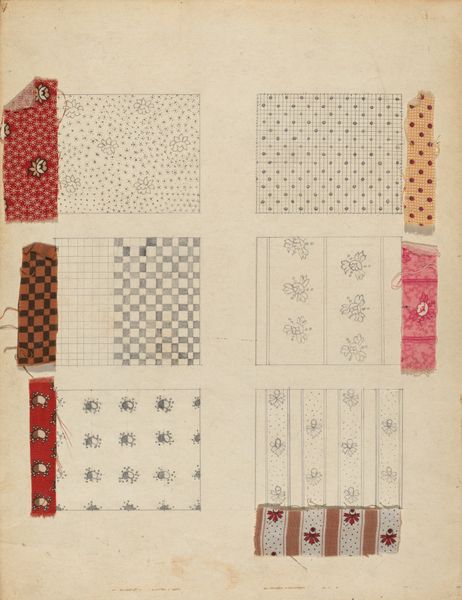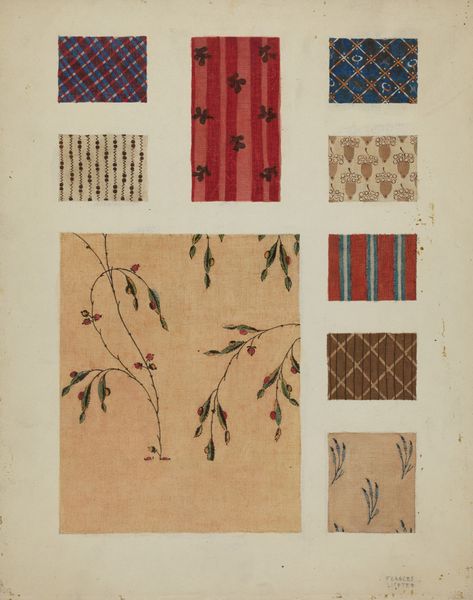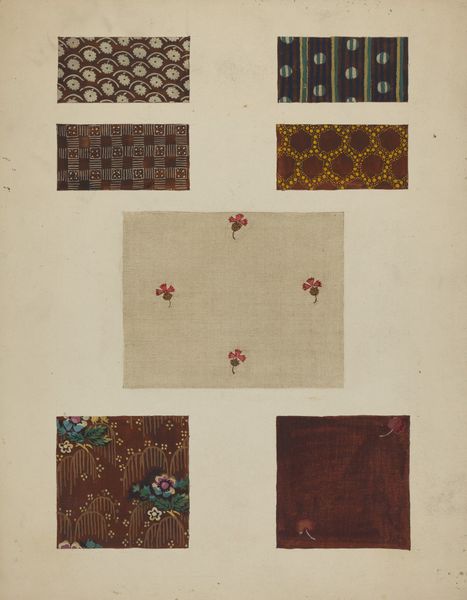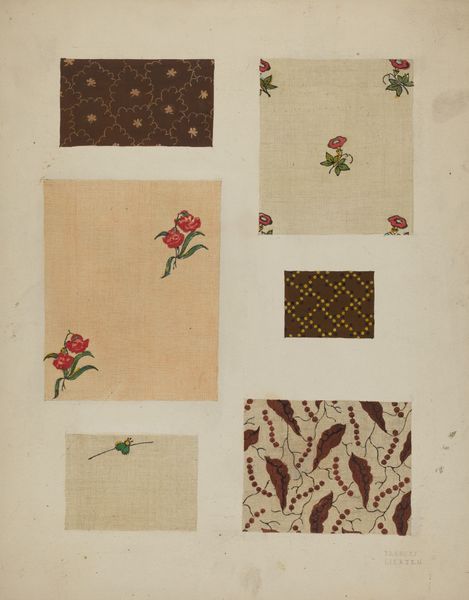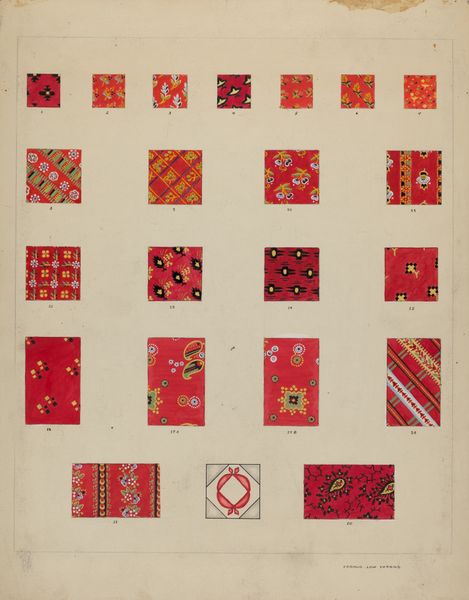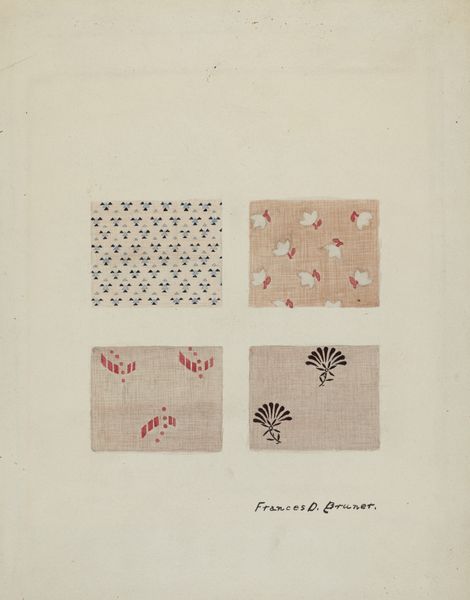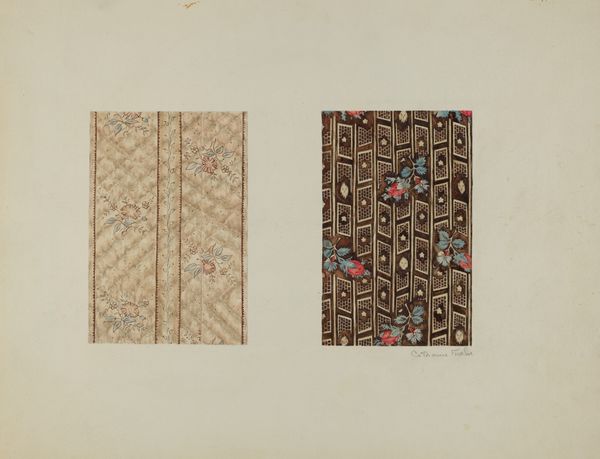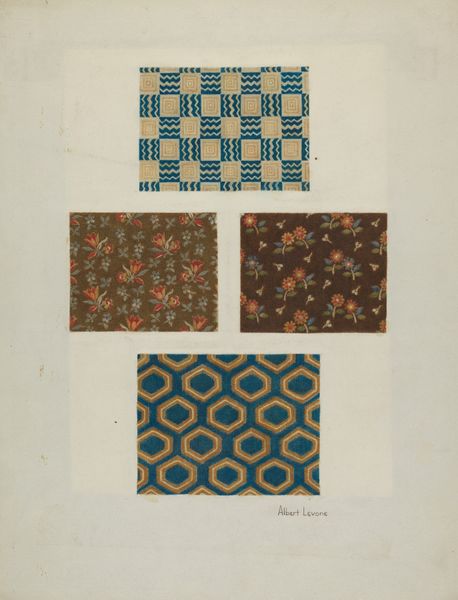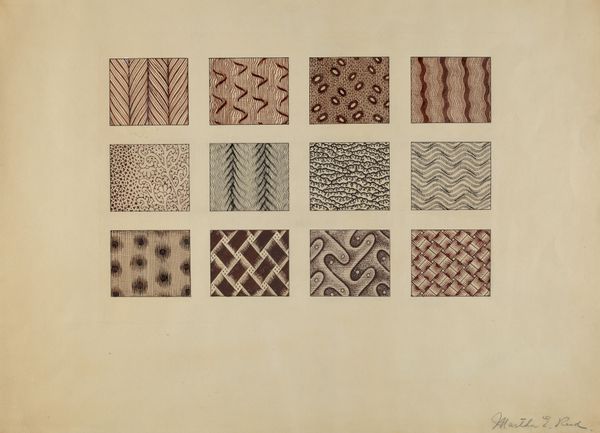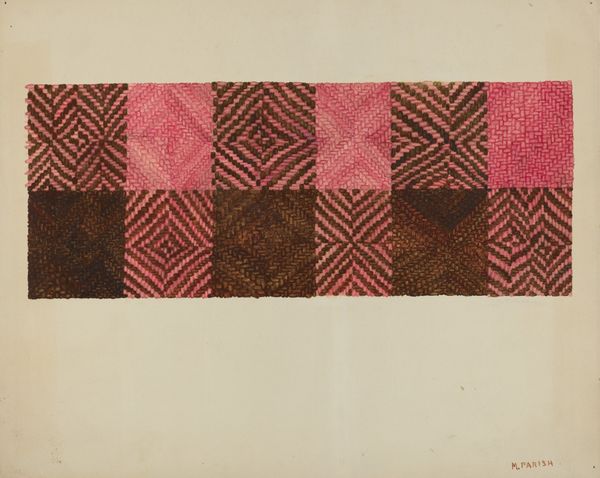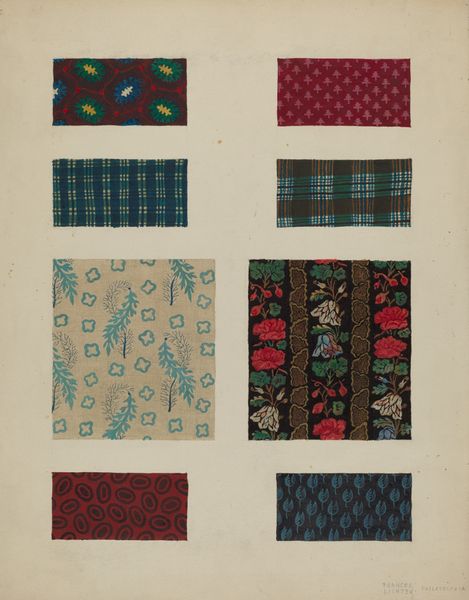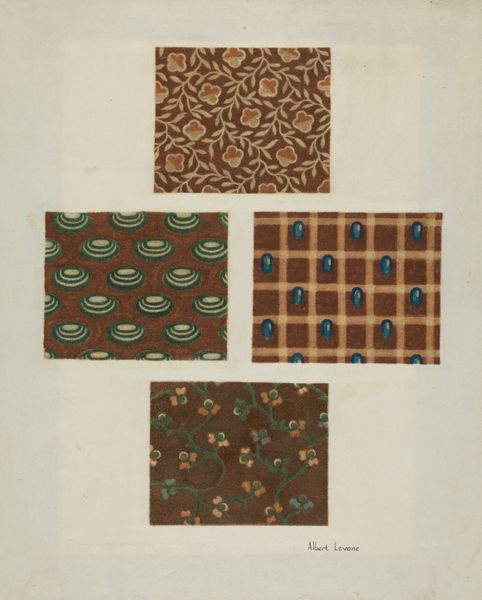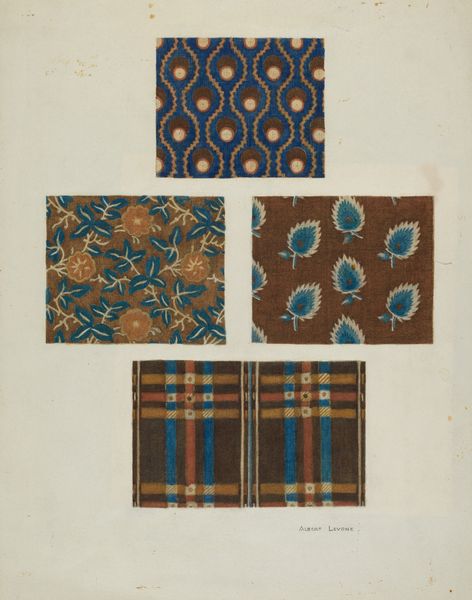
drawing, textile
#
drawing
#
water colours
#
textile
#
geometric
#
watercolor
Dimensions: overall: 46.3 x 34.9 cm (18 1/4 x 13 3/4 in.)
Copyright: National Gallery of Art: CC0 1.0
Curator: Let’s explore "Printed Cottons," a mixed-media design from around 1937 by Martha Reed. It's composed of 18 distinct pattern samples. What’s your first take? Editor: It has a quaint charm. It’s interesting how the variety of colors and patterns manage to feel quite subdued overall, almost like looking at a vintage sampler. Curator: It does radiate a sense of careful, crafted history. Reed was involved in the Index of American Design, a WPA program. It aimed to document American decorative arts, craft, and industrial design. This piece certainly echoes that mission, reflecting the American aesthetic sensibility of the time. Editor: Absolutely, you see it in the conscious attempt to archive these designs, creating a formal record of vernacular art, yet with a distinctly gendered frame: "decorative" and tied to domestic labor. I'm curious about the power dynamics inherent in that documentation. Curator: A valid point. These designs, executed primarily in watercolor and other mixed media, range from florals to geometrics. They offer a glimpse into the kind of textiles people used, a reflection of consumer culture. Editor: And they were likely intended for a specifically White, middle-class consumer. Whose labor produced the physical cotton in these imaginary textiles? Whose hands dyed these vibrant colors, or printed those exact designs in textile mills? I want to complicate this notion of ‘American’ design. Curator: It is crucial to recall the realities of textile production—including child labor and racial discrimination—which underpinned even idealized depictions. But there's a real strength to this visual archive as well. Reed's exacting rendering preserved ideas about what designs were deemed desirable. Editor: True. And these archived aesthetics often find themselves re-emerging cyclically, appropriated in modern fashion. Perhaps that's where the piece finds its most interesting context, as an artifact caught between past inequalities and their contemporary echoes. Curator: It gives us a window into design processes of the period. And while we are sensitive to the work's inherent politics and social milieu, these designs stand as historical references. Editor: Exactly, that tension is important to remember: between archival record and a potentially problematic reflection of its moment.
Comments
No comments
Be the first to comment and join the conversation on the ultimate creative platform.
